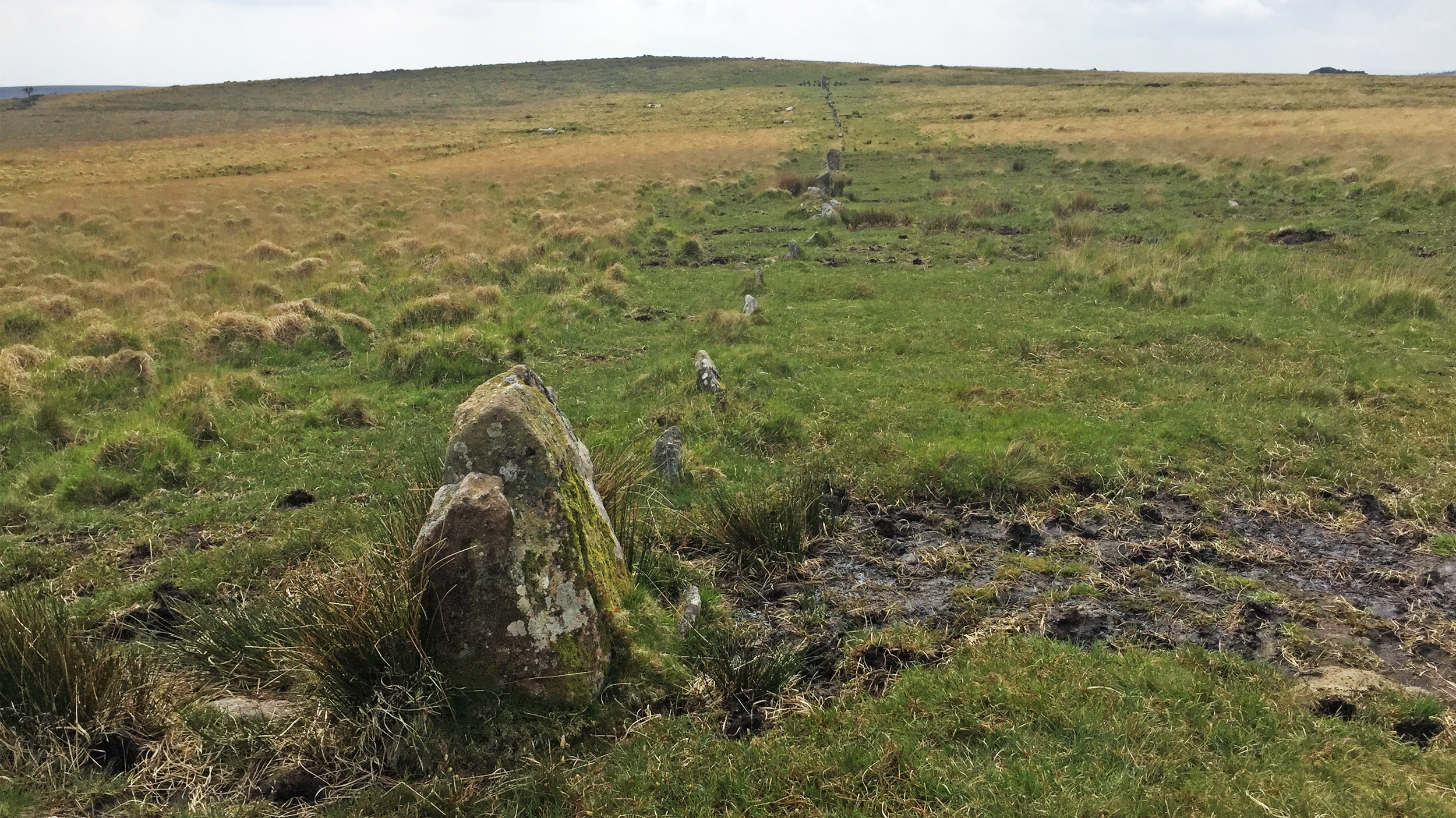Visiting a stone circle and stone row near Burrator, Dartmoor
I first visited this stone circle and stone row in the company of Aubrey Burl in the 1980s, and could not have asked for a better introduction. I return as often as I can.
On this sunny May afternoon I walked there from Burrator Reservoir, passing through the labyrinth of prehistoric field systems around Down Tor. There were cuckoos calling.
A view of the stone circle, which surrounds a cairn, as it is approached from the west. The stone row extends beyond. (Photo: Aaron Watson)
Aubrey Burl names the stone circle after nearby Down Tor, but the site is in an area known as Hingston Hill. The circle contains the remains of a burial cairn, and other cairns can be found nearby. The standing stones were partially restored in the 1890s.
The largest stones in the row are those near to the circle at the western end. (Photo: Aaron Watson)
The majority of stone rows on Dartmoor lead to a burial cairn at one end, but not all of these cairns have standing stones arranged around them. Like many other sites, there are tall stones terminating both ends of the row. The stones increase in height towards the stone circle. The row is not straight, but has curved sections. It is not aligned upon any significant features in the landscape .
Looking west along the row from the large stone at its eastern terminal. (Photo: Aaron Watson)
Walking along the Hingston Hill row is an interesting experience. It is set upon a shallow ridge which separates two tributaries of the River Meavy.
From the western cairn circle there are views across Dartmoor to the east. The ground can be seen falling away to a river valley. (Photo: Aaron Watson)
The view from a large cairn just beyond the eastern terminal of the row, showing how wide views to the west open up. (Photo: Aaron Watson)
The ends of the row are both higher than the middle section. This means that each end has a wider view, taking in numerous dramatic tors that are not visible from the lower ground between.The western terminal has wide views across high moorland to the east, while the eastern end has panoramic views of the western moor and towards Cornwall. Christopher Tilley has made similar observations with respect to stone rows on Bodmin Moor.




